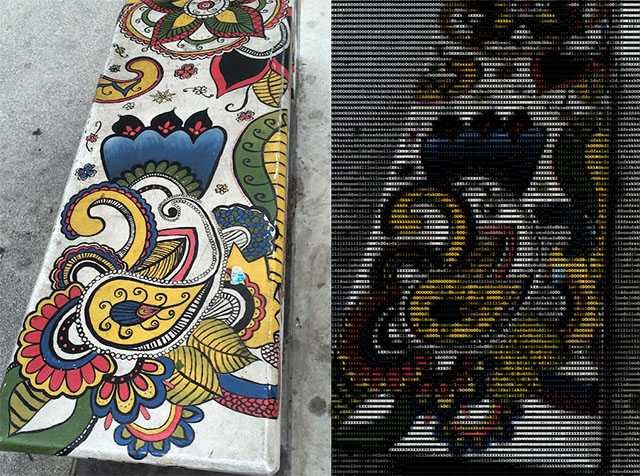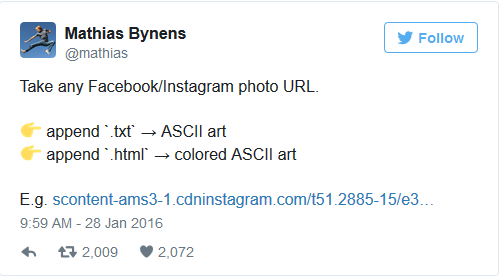Did you know that Facebook and Instagram have a "secret" feature that converts your photos to ASCII? Making a small change in your photo URLs, you can see them in color or black and white ASCII characters
The information came online from developer Mathias Bynens on twitter and has stimulated user interest.
As he says, the trick is extremely simple and applies to both sites. Just add the .txt or .html photo to the end of the photo url to see it in ASCII form. With txt it will be black and white and with html in color.
For example, if this is your usual URL from Facebook or Instagram ...
https://scontent-ams3-1.cdninstagram.com/t51.2885-15/e35/11906246_1700002456899911_1391970345_n.jpg
…. then just add .txt at the end to see it in white and black ASCII version:
https://scontent-ams3-1.cdninstagram.com/t51.2885-15/e35/11906246_1700002456899911_1391970345_n.jpg.txt
… Or add .html to see in ASCII colored:
https://scontent-ams3-1.cdninstagram.com/t51.2885-15/e35/11906246_1700002456899911_1391970345_n.jpg.html
Η procedure it's the same for photos on Facebook, although in our tests we struggled to find a photo on it whose url didn't end in ?oh=something . In these urls the trick does not work.
Of course on both sites although the conversion is a simple process, discovering its original URL image it is quite painful. For Instagram, you can view the source code in your browser and search for it there. And on Facebook, right-clicking images will unfortunately not get the correct format of the URLs.
But if you are able to find the right way to give the actual URL, then you can play with this fun feature.







